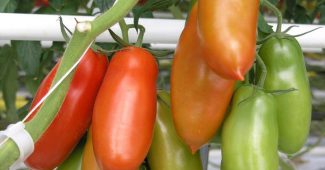For those with limited space, growing vegetables in containers is ideal. Certain vegetables thrive in containers with good potting mix and proper drainage. Container gardening requirements vary based on the type of vegetables, soil conditions, and the pot’s design, such as lightweight fabric pots. Here are the top 10 vegetables that yield best in small containers.
10Okra
As a heat-loving vegetable, grow okra during summer in containers in the sunniest spots of your yard. Since they easily grow from seed, you can start okra seeds indoors or directly in the container and transplant them outdoors when temperatures exceed 60 degrees Fahrenheit at night. Use a seed-starting mix and keep it moist until the seeds germinate.
Consider placing a seed-starting heat mat under the okra seed trays to hasten germination. Biodegradable peat pots are especially useful to transplant the okra plant without disturbing its roots. Use 12 to 15-inch deep pots since okra develops long taproots. Ensure the seedlings get enough light as they grow.
9Potato
It’s also important to provide them with sunny spots that receive at least 6 hours of bright light daily to ensure their productive growth. Prepare soil blend for planting potatoes by mixing potting mix with compost. Plant potato seeds about 10 inches apart using a 10-gallon or larger container to avoid stunted growth and lower yields.
Top 10 Best Tomatoes to Grow in your Vegetable Garden
8Lettuce
Choose a wide-mouth container to allow more room for spread, especially when planting several plants together. Self-watering containers with plenty of drainage holes work best as they help reduce overwatering and the spread of pathogens that damage plant roots. Lettuce needs 4-6 hours of direct sunlight daily, but some afternoon shade is also essential to keep cool.
7Peas
To avoid overwatering, use containers made of porous materials like ceramic to absorb and lose moisture. Plant peas 1-2 inches deep and almost an inch apart for a better yield. A wider, trough-shaped planter is always a great choice. Fresh potting soil with a balanced mix of nutrients and a higher percentage of phosphorus helps the plant’s growth.
6Squash
Containers are an excellent choice for growing squash as they ensure soil quality for the plant’s growth and keep ground pests off the plants. Squash thrives in garden soil with rich organic matter and well-decomposed compost. Place squash containers in a sunny location in your yard that receive at least 6 to 8 hours of direct sunlight for optimal growth.
You can plant two or more squash seeds about an inch deep and at least two inches spacing between each seed. Use a trellis or other type of support like tomato cages since they need support during growth. Use organic fertilizers every two weeks during the growing season for optimal growth.
5Cucumber
Good quality potting soil mixed with enough compost or manure helps provide plenty of nutrients and retain more moisture than ordinary garden soil for optimal growth. Since they are hot-weather plants, transplant them into biodegradable pots within 2-3 weeks after you start seeds indoors.
4Arugula
Arugula is a peppery salad green that can be grown organically in containers. It requires well-drained soil with rich organic matter and can tolerate various soil types that retain moisture. They require large pots with at least 24 inches of depth and width and a good number of drainage holes to grow them.
Water frequently to prevent the soil from drying out, but be careful not to overwater. For best results, choose a self-watering container. Arugula needs full sun for at least 6 hours daily, so even the partial shade may reduce yield. Plant it during cool temperatures to develop a sweet taste and prevent bolting so that you can harvest it during the winter months.
3Eggplant
Eggplants are sun-loving plants that thrive in warm climates and grow well in containers. Prepare well-drained soil beds enriched with nutrient-rich compost and manure to ensure optimal growth. Since eggplants really need warm soil to grow well, gardeners in cool climates often use large, dark-colored containers for best results.
On a sunny day, soil temperatures inside black pots are pretty high, usually 10 degrees or more than in-ground soil temperatures. These plants need at least 24 to 36 inches of spacing and 2 inches of compost to retain moisture and fertilizer. Since they are prone to falling when loaded with fruit, use support structures like small tomato cages to support the plants.
2Chilli Pepper
Choosing a container at least 12 inches wide and deep allows its roots to spread out and grow healthier. Fill the container with high-quality potting mix mixed with organic matter to help the soil retain moisture. Be sure to provide enough drainage holes to prevent the roots from rotting.
Related Articles
1Tomato
Choose a location in your yard to get at least 8 to 10 hours of direct sunlight. Repotting tomato plants helps develop larger root masses, resist pests and diseases, aid them to survive transplanting, and grow stronger. Containers with a minimum 10-gallon capacity and proper drainage help prevent waterlogging and improve oxygenation to the roots.




